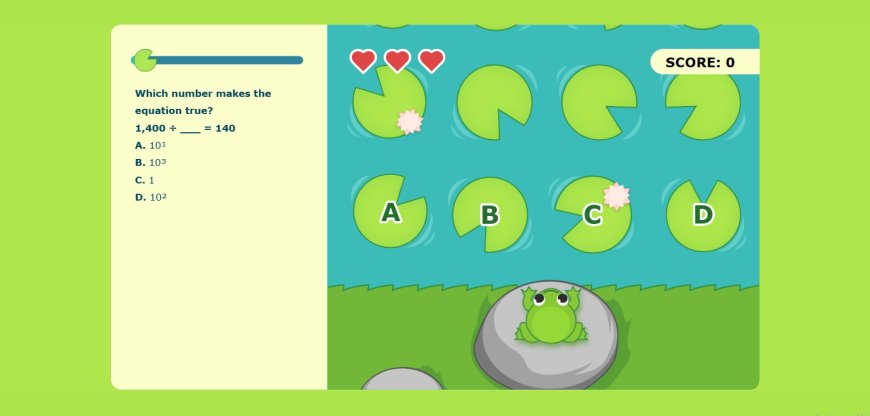Top Trends Shaping the Future of Custom eLearning Development

The eLearning landscape has undergone a remarkable transformation in recent years. With businesses and educational institutions seeking flexible, scalable, and learner-centric solutions, custom eLearning development has emerged as a powerful tool to deliver targeted training experiences. Unlike off-the-shelf content, custom eLearning enables organizations to design modules that align precisely with their goals, brand identity, and learner needs. As the digital learning environment evolves, several key trends are shaping the future of custom eLearning development.
In this article, well explore the top trends that are redefining how custom eLearning content is created and consumed, and why staying ahead of these developments is essential for educators, instructional designers, and organizations.
1. Microlearning for On-Demand Training
Microlearning is no longer just a buzzwordits a cornerstone of effective eLearning design. Learners today prefer bite-sized content that is easy to digest and can be accessed on-demand. Custom eLearning development is increasingly leveraging microlearning modules to deliver focused content in short burstsusually under 10 minutes.
These modules can be anything from quick video tutorials and infographics to mini-quizzes and interactive simulations. Microlearning aligns well with just-in-time training needs, making it ideal for employee onboarding, compliance refreshers, and sales enablement.
2. Mobile-First Learning Design
With the widespread use of smartphones and tablets, mobile learning has taken center stage. Custom eLearning developers are now prioritizing mobile-first design to ensure learners can access content anytime, anywhere.
Responsive design, intuitive navigation, and cross-platform compatibility are becoming standard practices. Whether learners are on a job site, commuting, or working remotely, mobile-friendly eLearning ensures uninterrupted and flexible training access.
3. Artificial Intelligence and Adaptive Learning
AI is revolutionizing the personalization of eLearning experiences. In custom eLearning development, artificial intelligence is being used to build adaptive learning paths that respond to a learners performance and behavior in real time.
AI-driven content can assess a learners strengths and weaknesses, recommend specific modules, adjust difficulty levels, and provide instant feedback. This level of customization ensures that learners stay engaged and receive the support they need, making learning more efficient and impactful.
4.Gamification for Increased Engagement
Gamification continues to be a dominant trend in custom eLearning development. By integrating elements like points, badges, leaderboards, and challenges, developers create a sense of competition and achievement that motivates learners.
When custom-built into the learning journey, gamification enhances knowledge retention and boosts participation rates. Particularly in corporate training, gamified modules lead to measurable improvements in employee performance and training ROI.
5.Immersive Learning with AR/VR
Augmented Reality (AR) and Virtual Reality (VR) are redefining how learners interact with content. These immersive technologies enable learners to experience scenarios that are difficult, dangerous, or expensive to replicate in real lifesuch as surgical procedures, mechanical training, or emergency response drills.
Custom eLearning development is increasingly integrating AR and VR to provide hands-on simulations that enhance understanding and build real-world skills. As hardware becomes more accessible and affordable, the adoption of immersive learning will only accelerate.
6.Data-Driven Design and Learning Analytics
Organizations want to ensure that their training investments are delivering results. Learning analytics is playing a crucial role in shaping the future of custom eLearning development. By analyzing learner behavior, progress, and outcomes, instructional designers can refine content and delivery methods.
Custom eLearning modules now come integrated with advanced tracking capabilities using Learning Management Systems (LMS) and Experience API (xAPI). This enables real-time feedback, performance measurement, and data-driven decisions to improve learning effectiveness.
7. Scenario-Based and Storytelling Approaches
Learners retain information better when they are emotionally engaged and see real-world relevance in what they are learning. Thats why scenario-based learning and storytelling are gaining popularity in custom eLearning development.
By embedding narratives, characters, and decision-making challenges, developers make content more relatable and memorable. These methods are particularly effective in soft skills training, compliance education, and leadership development.
8.Inclusive and Accessible Learning
Accessibility is no longer optionalits a necessity. Custom eLearning development is evolving to ensure content is inclusive and accessible to all learners, including those with disabilities.
This involves using screen reader-friendly content, keyboard navigation, closed captions, and color contrast enhancements. Designing with WCAG (Web Content Accessibility Guidelines) compliance in mind ensures equitable access and meets legal standards in many countries.
9.Cloud-Based eLearning Development Platforms
Cloud technology is streamlining how custom eLearning is developed, deployed, and managed. Many organizations now use cloud-based authoring tools like Articulate 360, Adobe Captivate, and Lectora Online to create, edit, and collaborate on courses in real time.
These platforms offer version control, easy updates, and faster turnaround times. Additionally, cloud deployment enables seamless content delivery across geographies and devices.
10. Integration with Enterprise Systems
To maximize impact, custom eLearning solutions are increasingly being integrated with broader enterprise ecosystems such as HR systems, CRM software, and performance management tools.
This integration allows for personalized learning journeys based on employee roles, past performance, or departmental goals. It also facilitates automatic certification tracking, skill-gap analysis, and performance-linked learning metrics.
11.Sustainable eLearning Practices
Sustainability is emerging as a key consideration in digital content development. By replacing paper-based training and reducing travel-related training costs, custom eLearning supports environmentally friendly practices.
Furthermore, development teams are focusing on modular designreusable learning objects that can be easily updatedreducing redundancy and content waste.
Final Thoughts
Custom eLearning development is not just about creating contentits about crafting meaningful, engaging, and results-driven learning experiences. The trends shaping its future reflect the evolving expectations of learners and the growing need for agility in training delivery.
From mobile optimization and AI-driven personalization to immersive technologies and data-informed design, these trends are steering custom eLearning toward a more adaptive, efficient, and inclusive future.
For organizations that want to remain competitive and agile in a knowledge-driven economy, investing in custom eLearning aligned with these trends is not just a smart choiceits a strategic imperative.
Whether you're an L&D professional, corporate trainer, or educational consultant, embracing these innovations will help you create impactful learning solutions that truly make a difference.


































